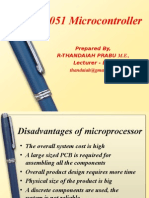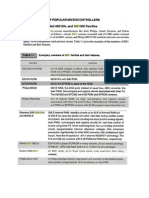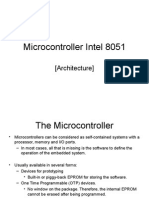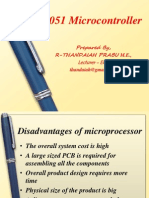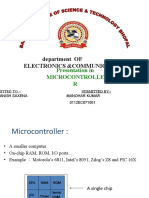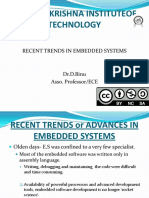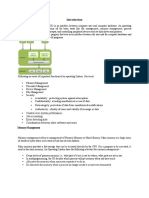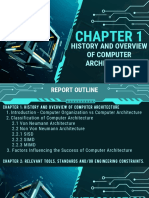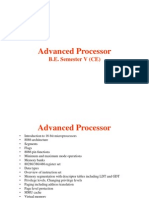0% found this document useful (0 votes)
101 views40 pagesMp8th Unit
The document compares microprocessors and microcontrollers. It states that microprocessors have the CPU on a separate chip from RAM, ROM, I/O and timers, while microcontrollers have these components integrated onto a single chip. It provides the 8051 microcontroller as an example and describes its architecture, pin layout, register set and advantages over microprocessors for applications where cost, power and space are critical factors.
Uploaded by
Pankaj GaonkarCopyright
© Attribution Non-Commercial (BY-NC)
We take content rights seriously. If you suspect this is your content, claim it here.
Available Formats
Download as PDF, TXT or read online on Scribd
0% found this document useful (0 votes)
101 views40 pagesMp8th Unit
The document compares microprocessors and microcontrollers. It states that microprocessors have the CPU on a separate chip from RAM, ROM, I/O and timers, while microcontrollers have these components integrated onto a single chip. It provides the 8051 microcontroller as an example and describes its architecture, pin layout, register set and advantages over microprocessors for applications where cost, power and space are critical factors.
Uploaded by
Pankaj GaonkarCopyright
© Attribution Non-Commercial (BY-NC)
We take content rights seriously. If you suspect this is your content, claim it here.
Available Formats
Download as PDF, TXT or read online on Scribd
/ 40











